Digital impact in the age of opportunities
The digital revolution has changed the rules, personal relations, business, communication and the way everyone uses their time. The impact of technology is always associated with achieving greater freedom, but it has also pushed us to levels of distraction and dependence that have changed how engage with the world.
The impact is profound, but hard to measure accurately. Sociologist and economist Manuel Castells believes that people, companies and institutions feel how profound this technological change is, “but when closely examined through rigorous empirical research, the speed and scope of the transformation turns out to not be exact.”

Introduction
Statements about how Internet use and new technologies create isolation are common, but the truth is that today’s online society is a product of the digital revolution and of some larger sociocultural changes.

The digital revolution has drastically changed communications. New mobile technologies have made it possible to end the isolation of the most marginalized regions and communities on the planet. The iconic image of a phone booth has now become part of our recent history. In Spain, 25,820 phone booths remain of the 100,000 that existed in the year 2000, according to the latest figures from 2015. In the past three years, they have declined 40% year-on-year
One of the signs of this new period is the so-called ‘Mencentered society’, which is none other than a growing individualization process. This phenomenon means that social relations as they existed prior to the digital breakthrough have been rebuilt on interests, values and personal projects that make up a new type of community that combines online and offline interaction.









As a result of the unstoppable progression of technology, which started with the arrival of the digital world, the vast majority of the objects that were part of a typical office are now considered museum artifacts | ÁLVARO YBARRA
BBVA knows that this change in habits from the digital impact affects financial services - making things easier for people and bringing the age of opportunity to everyone. That’s BBVA’s purpose.


Data storage systems have radically changed with the digital revolution. Paper records have been replaced by digital cloud-based storage | ÁLVARO YBARRA
To illustrate this concept, we asked one of the world’s greatest photographers, Álvaro Ybarra, to capture this change with his camera - to portray the before and after; the old and the new customs. Images can depict a period of time. The exercise we show below is part of a journey through four areas: infancy and youth; companies and entrepreneurs; recreation; and finance.
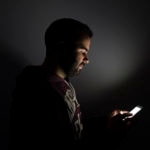

The digital revolution sees no physical borders. Communication between people and companies changed radically with the arrival of the digital world. The new platforms for communication reduce the distance and cost of keeping in touch with our loved ones or our partners | ÁLVARO YBARRA
People’s knowledge and expectations of companies and of the uses and services have changed drastically. This has fostered the disruption and accelerated the transformation to such an extent that today, there are five variables users value and which lead to the success of failure of a solution or service:
- Incredible things: all users expect a spectacular, simple and incredible experience from every digital solution.
- Things that are shared: having the possibility of sharing the experience. Although users may end up deciding not to share, having the option to do so makes the difference between adopting the solution or not.
- Things users can do themselves: everything that gives users autonomy to do things, to create something on their own, or apparently on their own, makes the difference between adopting or rejecting the innovation.
- Things that are done quickly: decision-making speed or allowing a user to execute their decision quickly is a fundamental characteristic in the digital age.
- Things that are transparent: clear language, visually clean, straightforward and traceable are essential traits to achieve success.

The rapid pace of development of information and communication technologies and the innovation of digital systems is a revolution that has fundamentally changed how people think, act, communicate, work and make a living. The so-called digital revolution has created new methods to create knowledge, educate the population and transmit information. It has restructured how countries do business and manage their economies, how they govern and make political commitments. It has provided rapid delivery of humanitarian aid, healthcare and a new vision of environmental protection.And it has even created new forms of entertainment and recreation
As a result, the way in which people interact with companies and with each other is changing. Technology in general, and the digital world in particular, impact users’ preferences, the value proposition and distribution models. If we put the focus on customers, we help to create greater empowerment for customers and users, making them feel a level of independence surrounding decision-making that has never been seen before.
In a way, this autonomy is somewhat fictitious, especially considering that companies have gone from reactively offering real or virtual products on their shelves to offering products and solutions proactively, based on knowledge of users and artificial intelligence. But if there’s anything that will make a difference in this change in the mid-term, it will be the distribution model.
All signs are pointing to a hands-free model, going from a physical distribution model to a digital one. We are moving toward a world of voice searches, conversations with bots and voice assistants that will allow users to streamline search times and decision-making.

The problem of e-waste increases as the digital revolution is introduced in society. Technological development combined with market logic create a situation in which society is constantly acquiring new electronics. The new functions and models devices offer; greater accessibility due to lower costs; and the endless availability of “the latest” version, means that these products become obsolete more and more quickly. According to Greenpeace, 10 million cell phones are discarded every year. More than 30 percent of these devices end up in landfills
The digital revolution offers significant benefits for users, but the environment is the technological impact discussed the least. UNEP (United Nations Environmental Programme) estimates that nearly 50 tons of electronics are discarded annually. The environmental impact of the technological boom is likely to be the negative side to this revolution.
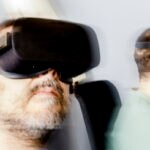
The digital revolution offers new business opportunities due to the arrival of new technological advances. One of the fields with the brightest future is virtual reality
The digital impact on our lives is undeniable, although there are some critics who at least put the positive aspect of this impact into perspective.While these innovations have changed many lives, they have not lead to a notable increase in productivity.At least this is the thesis of Robert Gordon, an economist at Northwestern University and one of the most cited and influential authors of the past year. Similarly, in a different field, Evgeny Morozov, has become one of the biggest critics of impact of technology on our lives.
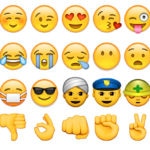

The change in social behavior and how we relate to each other has undergone a radical change resulting from the arrival of the digital world | ÁLVARO YBARRA
However, it seems that consensus about the benefits outweighs the criticism. Technological optimism supported by authors like Erik Brynjolfsson and Andrew McAfee is gaining ground over those that see a problem with the digital invasion. So far, all signs seem to indicate that the user wins and companies have tremendous challenges to manage. The change is not coming – it’s already here.

The selfie phenomenon is one of the most evident examples of the new patterns of behavior that come with the digital revolution
Technological innovation in the classroom motivates students to learn
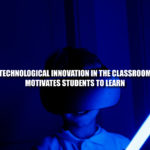
Technological advances have provided added motivation for the new generation of students. Everything learned through motivational means is sure to produce long-term learning. Therefore, the digital age not only allows students to learn using other means, it also offers the possibility of acquiring more lasting, practical knowledge in an intuitive manner.
The introduction and widespread use of new technologies in the classroom creates a new relationship among students, teachers and the material. Motivation and student interaction are the fundamental keys to understanding what psychologists and neuropsychologists have been analyzing for decades: when people are motivated to learn something, the knowledge endures over time.

The new generations are growing up in a digital reality. This fact has radically changed children’s behavior patterns. On the positive side, this can been seen as providing better education for an increasingly technological world, but on the negative side, it can be seen as making these new generations incapable of relating to the real, physical world
Internet connections in Spanish schools are extremely common. According to the report “ICT equipment and use in European and Latin American schools”, published by the Valencian International University (VIU) and led by Vicente Gabarda Méndez, already in 2014, there was a high rate of new technology inclusion and a high level of use in European and Latin American classrooms. Spain is slightly above average in the European Union (with an average of 99% of Internet connections in secondary school and 95.4% in primary school). Only two countries outranked Spain: the U.K, with 99.5% of Internet connections in secondary school and 100% in primary; and Finland, which tops the list with 100% in both primary and secondary.
According to the figures presented by the Ministry of Education, Culture and Sports, in the 2014 – 2015 academic year, there was an average of 2.8 students for each computer in public schools.




New technologies have become part of the new generations’ everyday lives and a platform where they can assert their identity and personality | ÁLVARO YBARRA
Motivation in the classroom: using technology as a means and not an end
New technologies include emotional and motivational aspects that make students pay more attention, therefore increasing how quickly they learn and improving comprehension. “New technologies are extremely motivating. Just the fact of bringing iPads, tablets or computers to class motivates students,” says José Alberto Martín, teacher, educator and PhD in Education Sciences.
This is the reason technology is used as a means, or a resource to deepen knowledge, and not an end. “Writing sentences in a notebook about a topic you like is not the same as having a blog where you upload your writing, share it with lots of people and they give comments,” explains José Alberto Martín. It’s writing, but with a different background.”


There is growing concern over the increasing isolation and loss of capacity of the new generations who believe in the digital revolution to express their emotions and feelings in a physical manner | ÁLVARO YBARRA
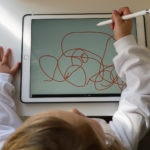
Technological advances have radically changed new teaching methodologies
Students currently have an extremely high ability to develop skills related to new technologies. However, the role of the teacher is fundamental to show them how to use them in the best possible way. Martín stresses the importance of showing them how to create a virtual reality. “We see so many stories about the footprint they are leaving online and I think it’s time for schools to address this issue,” he says.
“It’s important not to scare them. We shouldn’t say, ‘Be careful’
It’s not just what they publish on social networks. It’s also what can be extracted from their blogs or their interpretation of other pages. “It’s important not to scare them. We shouldn’t say, ‘Be careful.’ There are dangerous things, but we need to work on it with the kids. And it’s very important to work on digital identity with them because it’s their digital selves – It’s them online. And it’s just as important to take care of it just like they take care of themselves in real life,” the teacher clarifies.
The skills acquired while at school are skills that will later be developed on an everyday basis. Teamwork, reading comprehension, and writing skills are things children learn in the early years of education. But school is not the same as it was 20 years ago. Therefore, the use and knowledge of new technologies is essential for students.
As José Alberto Martín says, “you´re teaching them a series of skills, of capabilities, you’re working on a competence. That digital competence is going to allow them to face the future in a different way.”
“Technology will be completely integrated when it becomes invisible
According to Sandra Pérez, head of studies in the Master of Education and New technologies at the Universidad a Distancia de Madrid (UDIMA), technology will be completely integrated into the classroom when it becomes invisible. “You don´t walk into a classroom where there´s a blackboard and hear the students say, ‘My God! A blackboard!’. The idea should be, that technology is so integrated into the classroom that it´s invisible. It can´t be that you go into a classroom with a digital blackboard, which is no more than a projector, and have the students be amazed, ” she adds. That integration must take place in a transversal fashion, along the entire educational axis of any subject.
This, in addition, foments the students’ motivation and their integration into the subject matter and the explanations given by the professors. In fact, a model of inverted classroom has been implemented recently, in which the student studies the assignment alone at home and afterwards applies it in class, by doing exercises with the professor’s help. As Sandra Pérez says, “it´s necessary to change the traditional educational scenarios, because everything is changing and the new technologies including those in education, favor this change of scenario. Communication is much more instantaneous, interactivity and collaborative work are encouraged, and there´s a lot more motivation on the part of the student.”

The digital revolution offers an infinite range of resources to the teaching world. Unlike classical teaching, which is more linear and supported by writing and reading, the digital world offers education which is much more visual and intuitive, and facilitates learning, both for the teacher and for the student
Technology adapts itself to all kinds of capabilities
Some of the evidence accumulated over the past 30 years, since ICT (Information and Communication Technology) has begun to be used in the classroom, has shown that students acquire greater autonomy and more critical thought. According to Santiago Fernández, Director of the Didactics Department at the Universidad Autónoma de Madrid, “Students should receive basic training in the use of ICT, since not all of them come to the classroom with the same level of preparation. The so-called digital gap does exist, and this inequality must be resolved; the students should receive basic training when they arrive.”
If we had to underscore one of the characteristics that this group of students possesses, it would doubtless be that the student becomes the protagonist of his or her own learning. That implies a competitive advantage that has not always been taken into account: the speed of learning is better adapted to the needs of each student. “We have to keep in mind the level of learning can be adapted to his or her development. We can work at a different pace, according to his or her capabilities,” Fernández says.
Parents have become an essential pillar of the educational process. Thanks to technology, a greater and more fluid communication is reached between the professor and the parents. José María Vitaller, coordinator of the ITC Master’s program at the Universidad Autónoma de Madrid, underscores the benefits of technology for this communication. “ You have to keep in mind that the possibility of the parents’ following the development and performance of their children through digital platforms offers us many advantages in improving learning,” he says.

There is a negative impact of the digital revolution on the creative development of the new generations. Formerly, imagination played a fundamental role in child development. Today, that universe of creative fantasy that was cultivated within a child´s imagination has been replaced by the experiences and emotions offered by the digital world via tablets, telephones and other devices. Today children don´t know how to become bored, which is something fundamental to their development
What will the classrooms of the future be like?
The first step to understanding the classrooms of the future is to accept the challenge of total connectivity to the Internet. That is, to promote the complete and total use of the Internet. However, there are two other important aspects to it, such as the integration of ITC into all subjects; and not limiting those advances to a single, unique space. According to Francisco Javier Sánchez, professor of ITC and the Universidad Autónoma de Madrid, “If we put ICT in a separate classroom, we are isolating it and creating a separate subject.”
“The classroom will lose its functionality in the future
Another thing to keep in mind, according to Professor Javier Sánchez, is the importance of extending the classrooms beyond the four physical walls in which they are contained. Technological advances allow us to create communities and networks beyond a physical space, where the students can learn and work in a collaborative manner. “The classroom will lose its functionality and students will be able to connect simultaneously be synchronized with the professor when he or she is in the classroom,” he explains.

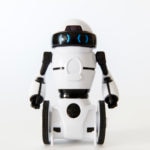
As opposed to the more participative conduct of previous generations, the new technologies have created a change in conduct, towards more isolation and physical inactivity | ÁLVARO YBARRA
Mobile Learning: the perfect complement to education
Although the very term Mobile Learning is often associated with distance education, it is a tool that is perfectly compatible with on-site education. But the very act of learning via a mobile application implies that this will not be at a fixed or predetermined place.
“Mobile Learning is a more spontaneous, informal kind of learning. It doesn´t require a context of distance, as is the case with eLearning, and it allows us to be connected simultaneously,” explains Sandra Pérez. “A more informal learning refers to that spontaneous and unstructured learning that occurs throughout our daily life. You grab the mobile phone and you start learning things.

Without a doubt, these new generations will be much better trained and prepared than the current generations for what lies ahead: a more technological and digital world
This manner of acquiring new knowledge promotes access to a greater number of people. Above all, it seeks to eliminate the technological gap that exists between the school and the daily lives of the students. In the professor´s words, “the intention is to integrate ICT so that there is no gap between society and the school.” If a child goes to a school and it doesn´t have these technologies, and later he or she gets home and does have them, this gap creates certain confusion. That´s why we have to form students according to society in which they will later participate, a society as changeable as it is today.”
However, any technological change in education faces entry barriers. Not only is there the economic aspect that goes with having this type of support in the classroom; the necessary software and hardware have to be adapted to the curricular goals and the needs of the professors when they are teaching. For that reason, there must be a methodological change, in which the professor takes on the role more like that of a consultant and facilitator of information.
The transformation of recreation: liquid movement
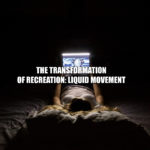
The right to rest and recreation is contained in Articles 24 and 27 of the 1948 Declaration of the Rights of Man. In the past six decades, the manner of viewing “rest and enjoyment of free time” has changed. Society has become mobile and hyperconnected, and so has recreation. Boredom, once understood as a form of learning, is disappearing. Entertainment “covers everything.” There is a sort of “horror vacui,” in which our time is constantly occupied by activities connected with an instrument that is in everyone´s pocket: the mobile phone. Within a few years, recreation linked to technology will become “the lever for a profound social transformation.”
“Humans need to look ahead. That capacity to imagine what’s to be done, what may happen, has been and is, vital to our evolution,” says Antonio Rodriguez de las Heras, tenured professor in Social History of the Universidad Carlos III in Madrid. That’s how he describes human behavior towards technology, in an article in the magazine Bez. Technology, he says, becomes a “disturbing experience,” provoked by – in a reference to Jorge Luis Borges – “the possibility of a continuous connection to a technological Aleph, a space without places, distance or memory.”

The digital revolution makes the individual the protagonist, creating a new behavior in which he or she has to show the world that they have an ideal and happy life, whether or not this is the case
Technology, connectivity and mobility have changed the way people around the world relate to one another and, by extension, their way of understanding recreation. Rest and the time to disconnect, as they were understood a couple of decades ago, have changed, just as the professional development of people has changed.
What is the real impact of this on our way of “disconnecting “from out daily tasks? “There’s no differentiation,” says Pepe Cerezo, managing partner of Evoca Imagen, a consulting firm dedicated to supporting digital transformation in other companies. “Everything is liquid…recreation and entertainment impregnate everything and it’s because of hyperconnectivity. It´s hard to differentiate and things are increasingly mixed together. You´re at the beach and an email message from work arrives, and you answer it. And in the opposite direction, you´re in a meeting and you check the social media. Entertainment permeates everything.”


Gonzalo Osborne is a young businessman who knows how important it is that his customers be active protagonists of his restaurant, Ichikoro. He knows that they’re his best allies when it comes to promoting the business and sharing their evaluations of it. That´s why, for him, social media play a fundamental role | ÁLVARO YBARRA
With respect to connectivity as a new way of life, there are some who see a negative implication for the development of society, “a reaction that accompanies all change,” says Antonio Rodríguez de las Heras. “There is no change without giving up something.” That´s where “uncertainty arises,” along the resistance to this metamorphosis.
How is this resistance reflected? Generally, in the combination of two actions that Rodriguez terms “sublimation and fear.” On the one hand, the virtues of things which are merely objects or practices are excessively extolled. And on the side of fear that which is new is presented as something threatening or ridiculous, “with the same excess and lack of foundation.”
Continuous connection
Hyperconnectivity has a much greater effect than the mere proliferation of electronic devices in the home which, for example, in Spain, began at the end of the 1980s.
The proliferation of connected devices allows families to be connected from thousands of kilometers away (via Skype, Messenger, Facebook, Live…) and also to save money on costs that were formerly associated with recreation. And companies benefit in the same way.
The ubiquity of communication changes the rules of the game as they had been understood up to now. The digital space, in the words of professor de las Heras, is like a mirror. “When we stand before the screen, a more or less sharp image of ourselves is created there, just on the other side of the surface of the glass, but in the virtual space of the digital world…and that´s where the communication takes place.”


The digital revolution has supposed, in many cases, the disappearance of something physical and its replacement by a digital file. Music and videogames have become assets in clouds or virtual worlds in the web | ÁLVARO YBARRA
The Connected Society
The numbers confirm this statement. Spain is the country with the highest penetration of smartphones in the world, followed by Singapore. According to data from the National Statistics Institute, 82% of the homes in Spain have an Internet connection and 80.6% of Spaniards have used the Internet in the past three months, a statistic that explodes if translated to the smartphone. The growth over a decade has been exponential; in 2006, broadband reached 28.5% of the population; today, eight out of ten Spaniards have a quality connection to Internet. Mobile phone penetration maintains the same level as in 2015 (96.7% of all h0mes).
No one makes a hotel reservation, buys a plane ticket or reserves theatre tickets without consulting someone’s opinion, comparing prices or checking to see if there’s a discount on some promotional website. All this is done online. This change of mentality affects, not only outside recreation, but also the way we approach recreation in the home, which has experienced a tsunami.
When radio came into the home, people sat around it to hear what came out; the same occurred with television. The relationship was hierarchical; usually, the parents decided what was listened to or seen. The new screens separate the group, so that each one can decide what he or she wants to do. The group shares the same space, but in another dimension.
According to a study by two Catalan universities, the Autónoma and Rovira y Vigili, “people share recreational experiences under the same roof but have very different experiences,” because they use different devices. The result is a dual phenomenon: they are “living together but separately,” or “alone in company.” Recreation in the home has changed its nature. Hyperconnection transforms everything and involves itself in daily activities, creating tensions. De las Heras, again, talks about “a dual society” that opens a new and profound change in which “the inertia of what is already established still weighs upon it.”
Not to mention created needs. According to data from the consultancy Global Web Index, six of every ten adults say that they share videos on the web giving them a certain context, in order to keep that content from being lost in the enormous amount of content available on the web.

Consumption a la carte has become a reality with the arrival of the digital revolution

One of the negative effects of the digital and technological revolution has been the onset of sedentary behaviors in recreation
Seeing life through the screen
Worldwide, 15% of the global population connected to the Internet does so exclusively via the mobile telephone. That´s where the exponential leap in hyperconnectivity occurs. Even the advertising models change. Everything is done on the screen, a process that permeates recreation completely. “Gamification” today is applied in business life as a way to connect with potential customers. Schools, meanwhile, use games as a way to capture the attention of students and as a methodology applied to learning curricular concepts.
Going from education to information, what many experts have for years been calling infotainment, now occupies a large part of the news programs on television and radio , as well as the pages of newspapers, not to mention entire sections in all the world’s news websites.
The multiscreen has arrived. Television has ceased to the favorite recreational product of young people. Even adults, if they do watch television, connect to the Internet and use multiple devices to do so. The United Kingdom, Spain, the United States Germany and Sweden are leaders in this way of interacting. These are mature markets in which people watch a television show and interact with it and with the environment in which they operate. If they don´t comment on what they are doing, the activity doesn’t exist. Today, few things are left for private enjoyment.
If we take these data to the milliennials, the transformation of their habits has made them the subject of study by sociologists. According to data from the consulting firm Deloitte, in 2025 the millennials will account for 75% of the world´s labor force. The mobile phone is king and they use it for everything. Compared to previous generations, such as the “X” Generation or the baby boomers, the millennials spend three hours a day connected to their telephones; that figure alone makes us understand that the screen embraces everything.
One example of the changes being produced in present-day recreation and culture was given by ‘The Economist’ magazine last October 7. Internet made it possible for the hyperconnected millenials to prompt the rage for vinyl records, creating a growth that would not have been possible if it were based only on nostalgic types in the 40-50 year age range. According to data from Nielsen, the market for vinyl records has been growing without interruption over the last decade, with 2015 the best year for the vinyl industry since 1988.
If you don't focus, you don't exist
The proliferation of smartphones has changed our way of seeing things. Before, we looked at things directly; now, we focus. We shoot a photo with the camera in the mobile phone, label it and share it. It´s no longer important to go places but to say that we’ve been there. Expressing your opinion about everything, incessantly, is an exercise of the ego that is multiplied exponentially by the social networks.
As if it were a nervous tic, the first thing one does upon getting up in the morning is to check the mobile phone, not to see the calls, but rather to see the likes, notifications, new followers or swipes… received in each one of our social networks. The maximum expression of this new form of recreation is the selfie. Nomophobia – the fear of being out of mobile phone contact - has invaded the way of life of many people.
And it´s growing, because Internet has created new digital habits: chatting with friends, listening to music downloaded from the web, sharing music, reading the digital press, playing games online, etc. Cisco and McKinsey have forecast that in 2025 there will be 50 billion devices connected, a figure that far exceeds that of the consultancy Gartner, which predicts that 21 billion devices will be connected in 2020.

The development of technological applications to offer new experiences to the recreation consumer is one of the great contributions of the digital revolution
Negative view of technology: the loneliness of a hyperconnected person
And as always, a negative interpretation aims to prevail over the positive interpretation. If the introduction of recreation in many human activities helps to adopt collaborative work methods (there are examples at BBVA with agile technology), there will always be someone to criticize it because “everything has become a game,” says Cerezo.
The key is knowing where to draw the line so that entertainment “doesn’t take over everything and we know how far it can go,” avoiding a clash with other areas. Determining where that line lies is the big question. The ability to give people discretion. That is education’s mission.
There are very few studies that analyze the reality of this statement. With a limited view, the analysis reflects a person in the subway lost in their phone, not paying attention to anything else. Apparently technology isolates people. A 2009 study by Pew Internet Research warns that this negative view has been applied to each and every one of the technological advances throughout history.
Over time, it has been demonstrated that technology brings people together. And you increase your social relations. As Pepe Cerezo says, “In general terms, it cannot be determined that technology isolates people,” but resistance to the transformation from the old to the new produces a denial of the new things that are coming. “The focus is put on all the problems because it forces you to change. It transforms you. And you reject it,”[a1] Cerezo affirms. For this expert in transforming processes in companies, you go through the first stage “of ignoring it, then you attack it and finally you assimilate it.” De las Heras looks at it in sensorial terms. “The digital world offers different experiences feeling presence. Because they are so new, they are not yet well understood.”
Online communication is not just another remote method of keeping in touch like a letter, the telephone… the Internet is different. Once again, uncertainty is becomes speculation “in such a way that there, on the other side of the mirror, we find ourselves with others in a space with no locations or distances.” This virtual world contradicts everything we have learned, society’s habits, and makes us reconsider deep-rooted concepts “like privacy and identity”. Today’s youth have a completely different concept of privacy than the previous generation. They’re less impudent. There is no feeling of “invasion” when they share their daily lives on social networks.


Thanks to today’s technological advances, there are no physical barriers to staying in touch. Platforms like Skype and other similar platforms have globally connected the world’s population | ÁLVARO YBARRA
The real impact of technology on recreation
Recreation, as it was understood several decades ago, has changed as a result of new technologies. What is its real impact? You just have to look at someone’s phone to see that it is filled with apps “full of objects right at our fingertips,” says de las Heras, “which in their origin, meaning their analogical version, occupy a place.” Therefore, “the digital world is very close to us and highly interactive. In other words, we can intervene and receive a reaction, but always with a degree of uncertainty.”
And that’s what makes it so attractive: the uncertainty. “We need a bit of uncertainty for our brain (which connects and reconnects neurons) and that’s the game. Just a ball and the action of bouncing gets both children and adults caught up in this very simple interaction, as every action of bouncing the ball creates uncertainty over how it will bounce. Taking this into account, the attraction to the digital technology that reaches individuals directly is very intense – until it becomes a prostheses - and that’s where the big and small behavior changes we are observing come in,” de las Heras insists.
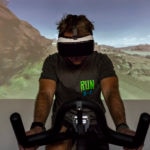
Due to the digital revolution, we now play an active, leading role in our recreation. Selfies are an accurate reflection of this. We need to share our recreation and private lives in the digital revolution – a radical change in behavior that arose as a result of new technologies
Virtual reality will dominate recreation
One of the few things that experts agree on is that advances in virtual reality will radically change approaches to recreation and the different possibilities it will offer. “Virtual reality will permeate through everything,” says Cerezo. Actual virtual worlds will be created and “that will replace many parts of our lives (travel, experiences, the creation of infinite parallel worlds).”
Where will each individual’s experiences take them? Professor de las Heras thinks that the changes will involve much more than entertainment. Recreation will be “the lever for a profound social transformation”. De las Heras points to two evolutionary lines: “the affectation of people due to technology like prosthesis, and the introduction of the digital world in objects (Internet of Things),” which is clearly manifested in automation, which has its own artists.
Not in vain, automation “will not only mean changes in production methods, but also, and very significantly, in values and culture.” It will change the concept of work and education “which currently prepares students for work and not for life,” and it will lead to a call for “education for recreation (and therefore preventing the niche from being filled with entertainment, another consumer good, like it is now) and not for work (today’s educational system serves the economic system, not people - an education reduced to professional training and not cultural training, increasingly detached from education, which is the same as saying for personal autonomy).”
Transformative entrepreneurship

Entrepreneurs are currently the cornerstone for a generation of jobs and wealth in Spain. A present that constitutes the future creation of well-being and wealth in which the “millennial generation” plays a fundamental role. These young people born between 1982 and 2004, with college or professional training degrees, are those making their mark on the entrepreneurial world that is opening up due to the new opportunities brought by the digital revolution.

Jesús Burgos is one of three founding partners at Miga Bakery, which is currently one of the best artisan bread shops in Spain’s capital city
Jesus Burgos together with his two partners, Juan Carlos and Jacobo Ortega, are examples of some of those entrepreneurs from the digital boom. “The truth is, if you think about it calmly, starting a business like Miga at the worst point of the economic crisis was suicidal. However, we had a very clear idea of what we wanted, what we would offer and thanks to the new tools the technological advances offer us today, we knew that Miga had a real shot at success, so we decided to start this new corporate adventure. Actually we really didn’t question it. We had blind faith in our product and time has proven us correct,” says Jesús.
Today, Miga Bakery is one of the best homemade bread shops in Spain’s capital city. In its three locations, customers can try traditional breads and pastries using traditional recipes and baked in handcrafted ovens. “For us, it’s fundamental that our customers enjoy freshly baked products at any time of day, sharing with them everything we do. We are able to do this thanks to the power, immediacy and scope that social networks give us,” maintains Jesús Burgos.
Jesús and the Ortega brothers are using new communication trends provided by platforms like Facebook, Twitter and Instagram for their entire marketing and communication strategy. This policy lets them have firsthand, real feedback from their customers and dynamic advertising that would have been impossible prior to the digital age for its high costs. “The way in which we communicate and how we sell our products would have been impossible before the digital revolution. Miga would not exist in the way it does today.” Thanks to the hard work of these three young entrepreneurs, Miga Bakery currently employs 40 people.
Entrepreneurs like Jesús and the Ortega brothers will represent 75% of the world’s workforce in 2025, according to a Deloitte study published in Forbes magazine. This group also resists the predominant status quo in traditional workplaces. They have one basic premise: satisfaction in overall life and at work. That’s why they strongly believe that if earning a lot of money means not having a life, they prefer to earn less. This positive attitude on life is transforming different aspects of our society, especially when it comes to work, redefining companies’ organizational structure and making them the new target to adapt new forms of business.


Jesús Burgos and his team working at one of Miga’s stores. Currently, Miga Bakery employs over 40 people | ÁLVARO YBARRA
True to this philosophy and in the purest Steve Jobs’ style, we find Clara working in her garage at home, which she’s turned into an impressive ‘showroom’. Two years ago, Clara de León and her sisters decided to take the leap and create Leonitas, a premium shoe and accessories brand, adapted to today’s needs. “It was all really my mother’s idea. We saw an opportunity in the premium shoes and accessories segment and started designing and decided to start creating our own products. Today, thanks to the amount of tools that new technologies offer, Leonitas can sell all over the world.”

Clara de León, founding partner of Leonitas
The fashion industry and new designers have hugely capitalized on the opportunities offered by new digital technologies. “15 years ago Leonitas wouldn’t have been able to sell products across the world, it was impossible from a logistics standpoint, and you didn’t either have a way to tell people about your product. Today, thanks to new technologies, these limitations have disappeared,” explains Clara, who thinks the opportunities offered by the digital world are endless, especially when it comes to evolving and growing her business.
“Today I can share projects, ideas with any designer in the world, instantly. Today we have a huge range of possibilities to keep growing and offering our customers totally new and creative ideas and collections. All this mixing and exchanging of ideas, at the click of button… it’s incredible.”


Clara de León working in her garage, which has been turned into an impressive showroom | ÁLVARO YBARRA
The digital revolution has enabled, more than anything, the appearance of new technological markets, where, without a doubt, the ‘Millennial Generation’ has been and is spearheading this new startup movement. Sectors such as the world of virtual reality, artificial intelligence and apps are just three of the most shining examples of the new technological opportunities that this revolution is offering.
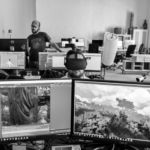
Roberto Romero working at Future Lighthouse’s headquarters, a pioneering company in narrative techniques and virtual reality
Roberto Romero, Nicolás and Steven, the founders of Future Lighthouse, a pioneering company in narrative techniques and virtual reality. “The digital revolution has spawned a new language, a new way of communicating, and we, at Future Lighthouse, have seen this new space as an opportunity to explore the possibilities offered by virtual reality in this new narrative.” Today, Future Lighthouse is already one of the world’s leading voices in new narratives in virtual reality, and has been involved in a growing number of successful projects, with companies such as Fly Emirates or the El Ministerio del Tiempo (Ministry of Time) series.

Pieter Low founding partner of Joinin
Digital technologies have also revolutionized the field of cooperation and solidarity. Pieter Low and his partners have created Joinin, an app that seeks to offer global solutions to manage the supply and demand for volunteering opportunities. “Devoting some of our time and skills to the rest of the world is something that is surprisingly difficult to do, one reason being the lack of platforms that facilitate volunteering.”
"Joinin is a meeting point, where organizations, businesses, and volunteers can work together on different projects,” says Pieter Low. Joinin offers a solution to the volunteer ecosystem, increasing participation among the different agents involved. It allows volunteers and volunteer projects to meet, show a background of social commitment, learn about volunteers, or contact them directly, providing powerful analytics and statistics to CSR teams.
“My partners and I believe in the power of co-creation and are experts at activating communities, getting individuals to participate in transforming our present day into a more sustainable tomorrow. When communities come together to solve everyday problems, they come up with very strong results, led by the people directly affected by these issues. This is the reason why we are challenging the status-quo and creating products that activate the collaborative nature within each individual,” says Low.


Joinin app users during a volunteer activity with Fundación Acción Social por la Músical (Social Action for Music Foundation) | ÁLVARO YBARRA
Merging tradition and the future is the biggest challenge and success of many of these projects. The Almansa brother’s new project is well worth taking a look at. Paula and José carry the entrepreneur gene in their blood. With a broad experience in the world of business, they are responsible for a long and successful list of startups. Loomhouse is their great project. A collaborative meeting point for tradition, innovation and technology.
“We live in an ever-shifting world, that’s always connected and quickly evolving. In Loomhouse we connect the new startups that are shaping the world of today and the world of tomorrow,” says Paula Almansa. “It is a space where we bring talent and ideas together, fostering synergies and interaction among projects from all over the world to build new opportunities and projects.
Located in the Real Fábrica de Tapices (Royal Tapestry Factory) in Madrid, Loomhouse is poised to become one of Europe’s leading collaborative innovation spaces.

Paula and José Almansa, founding partners of Loomhouse
“Today, if you want to see your project succeed, you can’t live turning your back to the world, secluded in an office. Today, the world is connected and constantly evolving. Loomhouse helps startups look for synergies with startups from across the world to increase their project’s chances to succeed,” say José and Paula.
The digital revolution has brought a radical change in the profile of new entrepreneurs. Young entrepreneurs, barely in their thirties, are re-writing history and bringing a new era to the social fabrics of our times.
Creating opportunities

Small things are important, indeed. Nowhere is this statement more evident than in the transformation that the banking and financial services industries have undergone. BBVA talks about the revolution of small things, which is really a far reaching revolution within the BBVA Group. A transformation that is ultimately aimed at bringing the age of opportunity to all its customers, to help them capitalize on the possibilities of the digital era to make better financial decisions.
Small things, such as the smartphone, are the gateway to huge changes. A device, originally intended to talk to other people, that has changed the way in which banks and customers engage, and revolutionized the way of operating with financial institutions.
The quick adoption of mobile channels does not just reflect a change in customer habits, who now demand immediate and seamless experiences, but also BBVA’s proactivity at the time of delivering of amazing products and experiences, capable of engaging and offering a differential value to their users. As of March 2017, BBVA had 19.3 digital customers, 20% more than in March 2016. 13.5 million of these customers are mobile customers. From March 2016 through March 2017, mobile users grew 36%.


At BBVA we always look at the future that new digital technologies promise as a great opportunity to keep growing as a leading institution in tomorrow’s banking sector, in an increasingly digital society | ÁLVARO YBARRA
Widespread smartphone adoption has also led to the development of Alta Inmediata, a service that enables customers to open a new bank account by just taking a selfie and a video-call. BBVA is the first institution in Spain to offer this product, which opens the door to new ways of attracting customers.
BBVA was also one of the first banks to offer a mobile payments solution, with BBVA Wallet, an app that has already been downloaded more than 8 million times and which is available in Mexico, Chile, Colombia, Spain, Turkey and the United States.

For BBVA, 2017 will be the year in which consumers will start seeing the advantages of digitization and how technology helps them every day
'Fintech' and exponential technologies
All these efforts represent the most visible face of the new way in which tomorrow’s financial services will operate. An area that, in principle seemed exclusively reserved for new startups, but where institutions such as BBVA have assumed a leadership role. BBVA understands that collaborating with the fintech world is crucial to the success of its transformation and that is why it is working side by side with the most disruptive “startups” in each segment through investments, partnerships and acquisitions.






Credit cards, checkbooks, accounting books and many of the traditional objects of the banking service portfolio which today have become a part of our memory of the past due to the arrival of the new digital age | ÁLVARO YBARRA
In this sense, some of BBVA’s most noteworthy moves include the acquisition of Simple in the U.S., a company that has changed how people engage with their bank and their money; the investment in Atom, the UK’s first mobile only bank, in which BBVA holds a stake of almost 29.5%; or Mexican payments platform Openpay, whose acquisition was recently completed. The Group has also set up Propel, a venture capital partnership that manages $250 million with to handle BBVA’s investments in disruptive fintech startups.

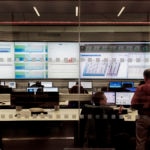
The technological progress enabled by the new digital era has become an essential part of BBVA’s DNA | ÁLVARO YBARRA
The transformation journey of the banking sector would not be complete without the adoption of the exponential technologies that are reshaping financial services. 'Cloud computing', big data, artificial intelligence or the blockchain are essential tools that company need to master to compete in the new environment. Thus, BBVA is focusing hard on its cloud strategy to face the exponential growth from mobile services. In fact, being in the cloud will allow BBVA to squeeze all the value out of these datasets, and to ultimately benefit its customers, projects and ideas.

All of us who are part of BBVA’s workforce are committed to bringing the opportunities of the digital era to everyone. “ Creating opportunities”

BBVA customers are enjoying the advantages of the digitization of our services and how they help them in their day-to-day lives. The digital revolution is allowing people to take more control over their lives. Smartphones and different tools bring the new opportunities to everyone, everywhere. The ability to speed up decision making processes and the potential to simplify everyone’s lives are the sign of the times in which we live
Similarly, the Group has also created the Head of Data at senior level within the organization, which will be responsible for ensuring the strategic use of data in all of the bank’s areas and businesses. In Spain, for example, big data’s power has enabled the launch of Commerce 360 - a service that helps SMEs make better commercial decisions based on data of their activity – and BBVA Valora, a tool which provides guidance on real estate sale or rental prices. During the first six months since it was released, BBVA Valora received over 1.3 million visits.
New ways of working
BBVA is at an interesting point right now, bringing in the best banking talent and the best digital talent, to build a new team of professionals ready to lead the global banking transformation.
The Group has adopted agile work methodologies, which enable short and iterative development cycles to deliver solutions in a faster and more efficient way. This adoption has been crucial in the development of new products and services based on customer feedback, which are therefore capable of actually catering to their needs.

Dynamism, optimism, transparency, authenticity… are some of the ideals that inspire the commitment of those of us who work at BBVA. For us, these values are not only part of our daily routine but are what make BBVA a great bank at the service of opportunities
The results of this methodology started showing clearly last year: BBVA has delivered up to 230 new digital and mobile services that aim to facilitate the adoption of vital finance-related decisions.
BBVA is transitioning from a hierarchical organization, based on organizational structures and reporting lines, to a flatter and more liquid organization, consisting multi-disciplinary teams with clear responsibilities. This shift poses a challenge bigger even that the technological transformation itself.

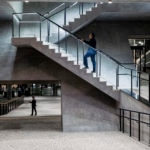
BBVA is a bank in perpetual motion. 160 years after its foundation, BBVA has become a global financial group, which is leading the global financial sector’s transformation Operating in 35 countries, with over 133,000 employees that serve 70 million customers | ÁLVARO YBARRA
The key to achieving this is ensuring that all BBVA employees embrace the organization’s purpose. Ultimately, this will require very specific behaviors from employees, such as personally taking responsibility for the bank’s success, not just for their own actions or their area’s performance, but for the bank as a whole. This means that if an employee sees something that is not working properly for our customers, they are responsible for doing something to change it, even if it is beyond their scope of work.
And here’s where communication becomes vital: to help each one of the bank’s employees to understand the goals that are being pursued and the expected results. Another essential element is leadership: To ask a team to embrace change, to explore new ways of working and take risks, managers need to lead by example. Leadership has always been important in any organization, but in a time like this in banking, it becomes an essential factor for a company’s success.

BBVA’s new headquarters in Madrid embodies the values that have always distinguished the bank and its vision. The corporate complex has been recognized with the prestigious LEED Gold certification for its sustainable design. Designed by Herzog and de Meuron, the building’s distinctive architecture seeks to enable significant energy savings, thanks to its insulating façade and vegetation roofing systems. Also, Ciudad BBVA, recycles 100% of its waste and rainfall, it is the largest building in Europe equipped with LED lighting technology and has a presence monitoring system to optimize energy consumption
The transformation of the financial sector has just started, and BBVA is fully engaged in the process, which ultimately seeks to deliver on its ambitious goal: to bring the age of opportunity to everyone.